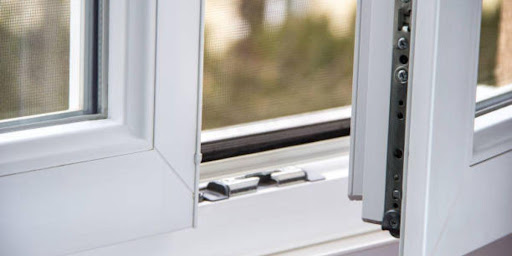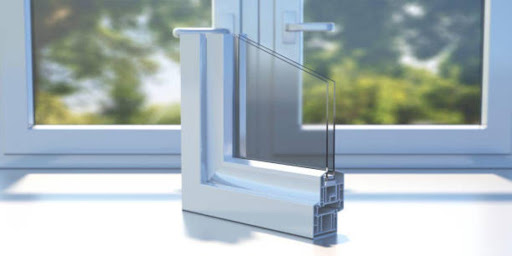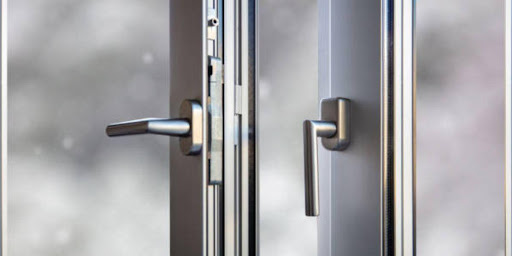Power Articles
Industry Elevating Content
Choosing the Right Window and Door Glazing Options for Climate Control

PowerArticles
August 7, 2023
Welcome to the comprehensive guide on “Choosing the Right Window and Door Glazing Options for Climate Control,” specially designed to educate companies specializing in window and door installation. As the world becomes increasingly conscious of its environmental impact and energy efficiency, the role of windows and doors in climate control has never been more critical. This article delves into the various glazing options available, exploring their effectiveness in regulating indoor temperatures, enhancing insulation, and reducing energy consumption. By understanding the distinct advantages of each glazing type in different climates, companies can make informed decisions to offer their clients sustainable and tailored solutions that optimize comfort and contribute to a greener future.
Understanding Climate Zones and Energy Efficiency Requirements
When it comes to choosing the right window and door glazing options for climate control, understanding the different climate zones is crucial. Climate zones are geographical areas characterized by specific weather patterns, temperature ranges, and humidity levels. These zones are classified based on factors such as latitude, altitude, and proximity to large bodies of water. The most common climate zones include tropical, temperate, arid, and cold climates.
Tropical climates are typically hot and humid throughout the year, while temperate climates experience moderate temperatures with seasonal variations. Arid climates are characterized by low humidity and little precipitation, and cold climates have chilly winters with possible snowfall.
Impact of Glazing on Energy Consumption in Different Climates
The choice of window and door glazing significantly impacts a building’s energy consumption and overall comfort. In tropical and temperate climates, energy-efficient glazing with low solar heat gain and high thermal insulation is essential. These windows and doors can prevent excessive heat gain in summers and heat loss in winters, reducing cooling and heating requirements and lowering energy bills.
In arid climates, windows with excellent solar control are vital to minimize heat penetration while allowing natural light. This helps maintain a comfortable indoor environment without over-reliance on air conditioning.
In cold climates, energy-efficient windows with high thermal insulation are crucial for retaining indoor heat and reducing reliance on heating systems during harsh winters.
Energy Efficiency Standards and Regulations
As awareness of climate change and energy conservation grows, governments and environmental agencies have implemented energy efficiency standards and regulations to guide window and door installation companies. These regulations may include specific glazing performance requirements based on climate zones.
Companies installing windows and doors must adhere to these standards to ensure that the products they offer meet the energy efficiency criteria for the specific climate zone where they are being installed. Compliance with these regulations ensures environmental responsibility and provides customers with energy-efficient solutions, enhancing their satisfaction with the products and services offered.

Types of Window and Door Glazing Options
Single Glazing
Definition and Characteristics: Single glazing consists of a single glass pane and has been commonly used in the past. It offers limited insulation and thermal efficiency compared to modern glazing options.
Advantages and Disadvantages
The primary advantage of single glazing is its lower initial cost, making it an economical choice for budget-conscious customers. However, it has several disadvantages, including poor insulation and reduced energy efficiency, leading to potential heat loss or gain and higher utility bills.
Suitable Applications and Climate Zones
Single glazing is best suited for mild climates where extreme temperatures are not a concern. It may work well in areas with minimal heating or cooling requirements.
Double Glazing
Double glazing involves two glass panes with a layer of air or gas trapped in-between, providing improved insulation and energy efficiency compared to single glazing.
Advantages and Disadvantages
Double glazing significantly enhances thermal performance, reducing heat transfer between the interior and exterior. This results in better climate control and lower energy consumption. However, it is still less efficient than triple glazing.
Suitable Applications and Climate Zones
Double glazing is suitable for a wide range of climates, particularly in regions with moderate temperature variations. It works well in both heating and cooling-dominated climates, offering a balanced solution for energy efficiency.
Triple Glazing
Triple glazing comprises three glass panes separated by layers of air or gas, providing the highest level of insulation and energy efficiency among the glazing options.
Advantages and Disadvantages
Triple glazing offers superior thermal performance, reducing heat transfer and minimizing energy losses to the greatest extent. However, it tends to be more expensive than other glazing options.
Suitable Applications and Climate Zones
Triple glazing is most beneficial in climates with extremely cold winters, as it effectively retains heat and ensures a comfortable indoor environment. It is also suitable for energy-efficient buildings and environmentally conscious customers.
Low-E Coatings
Low-emissivity (low-E) coatings are thin, transparent layers applied to glass surfaces. They minimize the amount of infrared and ultraviolet radiation that can pass through the glass, reducing heat transfer and improving energy efficiency.
Benefits of Low-E Coatings for Energy Efficiency
Low-E coatings significantly enhance the thermal performance of glazing by reflecting heat back into the interior during cold weather and blocking solar heat during hot weather. This results in reduced heating and cooling costs.
Appropriate Uses and Considerations
Low-E coatings are versatile and can be combined with various glazing options like double or triple glazing for enhanced energy efficiency. Installers should consider the climate zone and orientation of the building to determine the most suitable low-E coating type.
Gas Fills
Types of Gases Used in Insulated Glazing Units
Insulated glazing units (IGUs) can be filled with inert gases such as argon, krypton, or xenon, which have higher thermal resistance than air, further reducing heat transfer.
Enhancing Thermal Performance with Gas Fills
Gas fills contribute to better insulation by reducing convective heat loss within the glazing unit. They work in tandem with low-E coatings to optimize energy efficiency.
Climate-Specific Recommendations
The choice of gas fill depends on the climate zone and the glazing configuration. For example, krypton-filled IGUs are more effective in extreme climates, while argon-filled IGUs offer excellent performance in moderate climates.

Factors Affecting Glazing Performance
Understanding the factors that affect glazing performance is essential for companies that install windows and doors, as it enables them to make informed decisions and offer the best solutions to their clients. Here are the key factors that significantly influence glazing performance:
A. Solar Heat Gain Coefficient (SHGC)
The Solar Heat Gain Coefficient (SHGC) measures how much solar radiation enters through the glazing. It represents the fraction of solar heat transmitted directly through the window and absorbed, contributing to indoor heat gain. A lower SHGC indicates better heat blockage, making it ideal for hot climates, while a higher SHGC is more suitable for colder regions where passive solar heating is desired.
B. U-Factor
The U-Factor, also known as thermal transmittance, measures how effectively a window conducts heat. A lower U-Factor signifies better insulation properties, reducing heat transfer between the interior and exterior. For regions with cold winters, choosing windows with a lower U-Factor helps maintain indoor warmth and lowers energy consumption.
C. Visible Transmittance (VT)
Visible Transmittance (VT) measures the amount of visible light that passes through the glazing. A higher VT value means more natural light enters the building, reducing the need for artificial lighting during the day and enhancing occupants’ comfort and productivity.
D. Air Leakage
Air leakage refers to the amount of outside air that enters a building through gaps and cracks in the window and door assembly. Minimizing air leakage is essential for energy efficiency and maintaining a comfortable indoor environment. High-quality installation and proper sealing are crucial to reduce air infiltration.
E. Condensation Resistance
Condensation resistance measures a window’s ability to resist the formation of condensation on its surface. Windows with better condensation resistance are less prone to moisture buildup, reducing the risk of mold growth and maintaining clear views through the glazing.

Conclusion
In conclusion, selecting the appropriate window and door glazing options for climate control is crucial for companies specializing in window and door installation. With the growing awareness of energy efficiency and the impact of climate change, providing clients with well-informed choices can enhance their comfort and reduce energy costs significantly.
Understanding the local climate, thermal performance ratings, and the latest advancements in glazing technologies is essential in offering tailored solutions that meet specific needs. By prioritizing sustainable and energy-efficient glazing options, companies can play a pivotal role in promoting environmentally conscious practices while also establishing a competitive edge in the market. Ultimately, the integration of suitable glazing options will ensure client satisfaction and contribute positively to a greener and more sustainable future.
Published By
PowerArticles
August 7, 2023